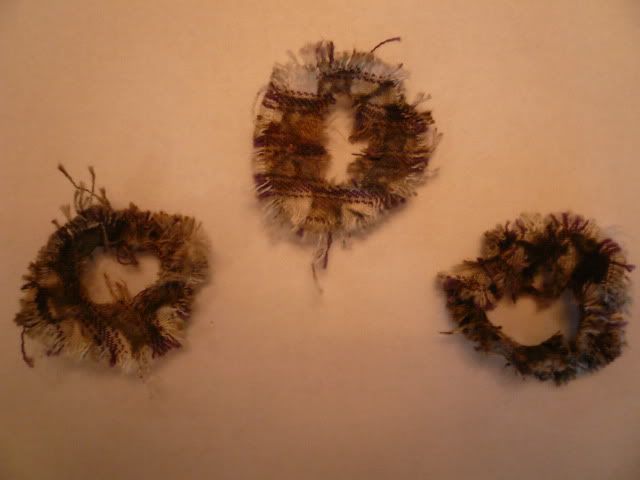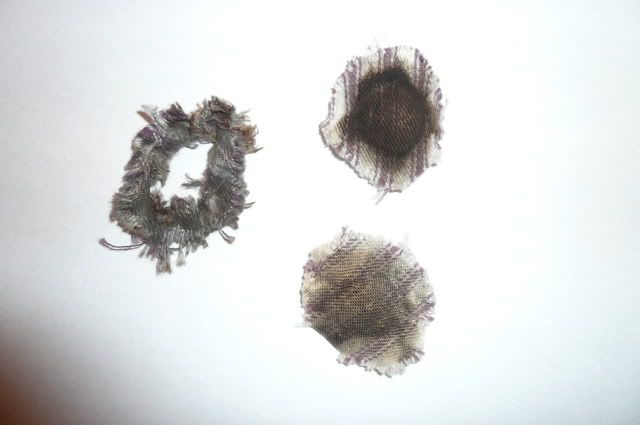I have previously been firing my Lyman GPR with 75gr of Triple 7 FFG, Remington #11 caps, .490 balls, and Cabela's .020" pre-lubed patches. The shot grouping was so-so; with the occasional flyer. Recovered patches would often have a semi-circular section torn/burned from the edge of the patch. Sorry, no pictures...just imagine a clock face where one number has been scalloped out.
Went to the range today. Same rifle, same caps, same powder with the charge reduced to 50gr. Still using .490 balls; but patching with .018" thick pillow ticking. Todays patches were dry lubed at home with a 7:1 ratio of water and Ballistol. The rifle groups better than before; and there were no flyers. However, the recovered patches are very interesting. Take a look at the pictures of today's patches and tell me what's happening. Well, I know what's happening; but I don't know why the patches are burning through.

Went to the range today. Same rifle, same caps, same powder with the charge reduced to 50gr. Still using .490 balls; but patching with .018" thick pillow ticking. Todays patches were dry lubed at home with a 7:1 ratio of water and Ballistol. The rifle groups better than before; and there were no flyers. However, the recovered patches are very interesting. Take a look at the pictures of today's patches and tell me what's happening. Well, I know what's happening; but I don't know why the patches are burning through.


